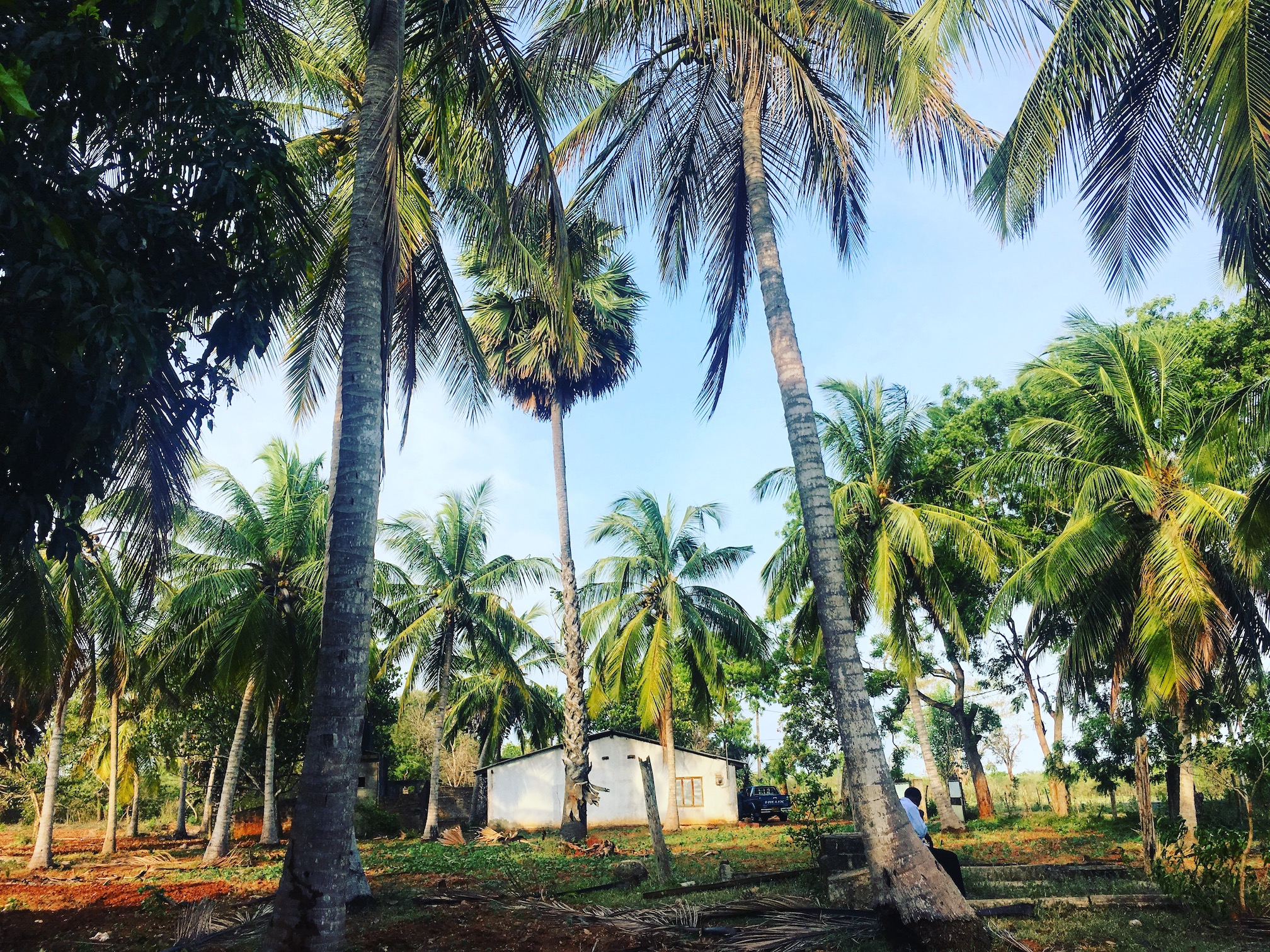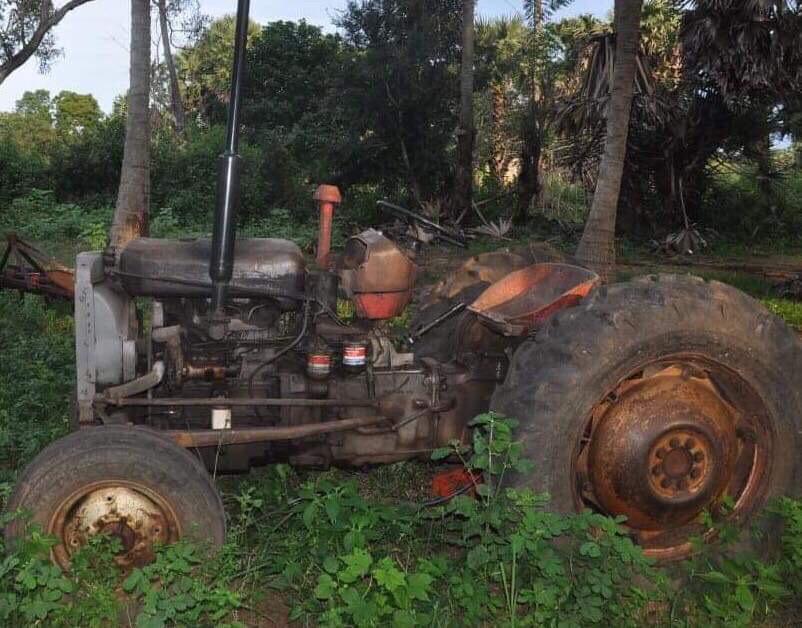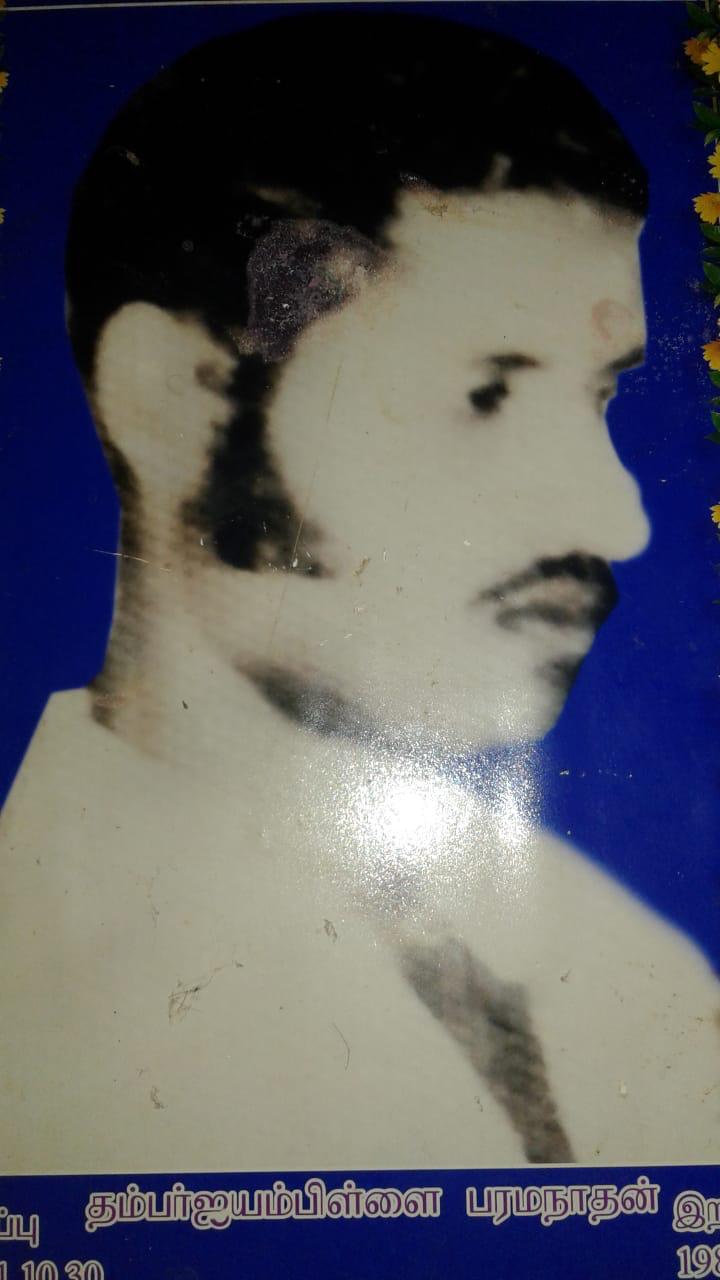![]()
Three sons of Dr Sangarapillai
Thirty-five years ago, while many slept and some were already in the fields, the Sri Lankan army declared a sudden curfew in the town of Cheddikulam and surrounding villages on the border of Vavuniya district.
As news of the curfew seeped through the town through radio and word of mouth, residents scrambled to their homes or the closest house of someone they knew so as not to be caught outside.
Sri Lankan soldiers went house to house, rounding-up young men and boys for inquiry.
Houses were set alight and villagers report hearing gunshots ringing around the area.

Fifty-two were taken that day, December 2, 1984, never to be seen again.
“I saw them [the soldiers] go into my neighbour’s house, and I ran for my life out of the back and into the forest behind my house,” recalls Moorthy, a native of Cheddikulam now living in Germany.
“It was so well planned. You don’t know how to react when a curfew is called. Do you run and risk being caught breaking the curfew? Or do you follow the orders and stay at home, waiting for them to come and get you?”
Kumar who now lives in Switzerland also remembers escaping by a hair’s breadth.
“I had been out all morning before I even heard that there was a curfew,” he says. “I tried to pedal home as fast as I could but I heard the army coming.”
“I jumped off my bicycle and ran into the overgrowth as deep as I could, and hid there for hours. When I came back to the road, my bike was gone. Actually it was my father’s bike, a Raleigh. He had used it for 21 years to get to work. I remember it so vividly, the sadness at losing that cycle. It’s not that that was worse than all the lives lost, it’s just that I knew life would never be the same again.”
Kumar’s family home (pictured above, 2017) which was on the main road had been visited by the troops.
“By pure chance there were no males at home,” Kumar explains. “The neighbouring house was my aunt’s. Seven men and boys in total in both our houses, and luckily none of us were home.”
Some houses lost every male and at least five families lost more than one member.
“Doctor Sangarapillai’s three sons were taken,” says Moorthy. “It was heartbreaking.”
Another family, the Alvins, lost four members. Ledchumi Kandiah, a ninety-year-old matriarch of Cheddikulam passed away earlier this year. She had outlived three of her four sons, one of whom was disappeared on this day, another last seen in the back of a Sri Lankan army jeep on another day, and another killed in an anti-Tamil pogrom in a nearby Sinhala border village.

A tractor that had been set alight by the soldiers.
Three houses, Doctor Jayaratnam’s, Markandu’s and Mylvaganam’s were set alight with all their possessions, as the families had to stand and watch.
Not included in the fifty-two toll, one Tamil youth called Kiliyan had been shot and killed during the round-up.
“This was a dark day for our village,” says Siva, now living in France. “It was the day that forced all of us to make a decision. Flee or fight. So people either left the country or joined the armed struggle.”
Although the fates of the fifty-two men have never been confirmed, the people of Cheddikulam heard different reports confirming their deaths, the most prevalent of which was that the men were transported to Madawachi where they were killed and their bodies mutilated beyond identification.

Iyampillai Paramanathan, one of the 52 victims
A remembrance for the massacre will be held today in Cheddikulam for the first time.
The fifty-two victims of the Cheddikulam massacre:
|
Mylvaganam Vaithilingam Kumar Varatharasa Paramalingam Paramanathan Appapillai Vettrivelpillai Oorkanasamy Jothi Kandiah Gengaratnam Sangarapillai Selventhiran Sangarapillai Nagulenthiran Sangarapillai Balenthiran Kulasegarampillai Eugene Pandian Periyarasu Chithravadivel Philippaiya Arudpragasam Ramasamy Ponnuthurai Iyampillai Paramanathan Senathirasa Nathan Muthusamy Konarkopal Murugesu Sangarappillai Ramasamy Sithamparapillai Alvin Robinson Alvin Anthony Stevenson Alvin Alexander Alvin Anton Ponnuthurai Christhuraja Ponnuthurai Thananayagam Philippupillai Anthonipillai |
Sounthararasan Pusparasa Sellaiah Jude Sellaiah Ketheeswaran Sellar Moorthy Sellar Mahenthiran Vethanayagam Sebamalai Veluppillai Sivabalasingam Santhappillai Iruthayarasan Sinnakutty Kanthasamy Sivaganeshan Gurukulasamy Vadivel Ashokumar Vinayagamoorthy Yoganthan Veluppillai Mahenthiran Vanniyasingam Krishnothayabalan Thiyagarasa Ananthasivam Kanthaiah Kulanthaivelu Soosaipillai Christhurasa Ramasamy Sinnathamby Mahalingam Manmatharasa Kumarasamy Satkunaseyon Aasirvatham Alexander Nagalingam Kanapathipillai Pathmarasa Michael Gnanapragasam Subramaniam Ambalavaner |
